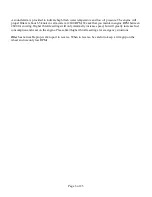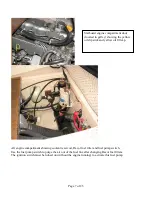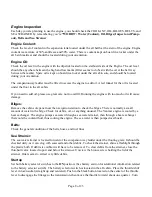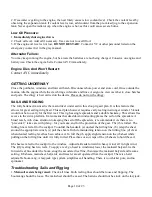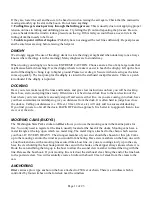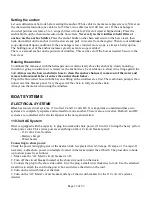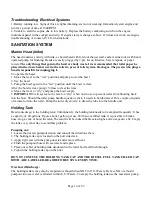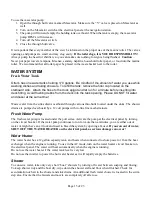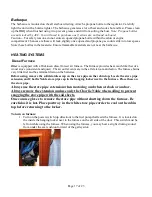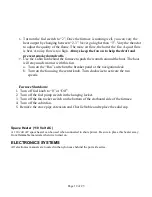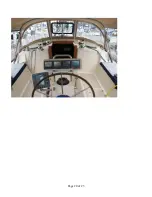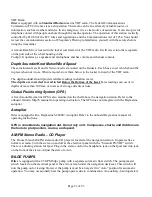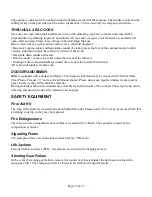
Page 9 of 23
the key to the ON position. You will hear the audible alarm sound. Turn the key to the start position until
engine starts. When starting cold,
allow the engine to warm up at an idle for TEN MINUTES
prior to
applying a load. If load is applied before the engine warms it may seize. Normal idle speed is 1000 RPM.
Be sure the audible alarm is not sounding. It should stop when the engine starts.
NOTE:
Do not hold the
start key for more that FIFTEEN SECONDS at a time. If the engine does not start the first time, wait a few
seconds before trying again. Please remember NEVER TURN THE KEY OFF WHILE THE ENGINE IS
RUNNING! You will do serious alternator damage. It should always remain on. Engine alarms will not
work when the key is off. While the engine is warming, check for water exiting the exhaust. You may not be
able to see the water, but you should be able to hear it exit with the exhaust.
Shifting
To engage the transmission, move the throttle/shift lever to the low/neutral (straight up) position. Push
throttle forward for forward propulsion, or back for backward propulsion.
Shutdown
Place the throttle/shift lever in neutral and allow the engine to cool down for several minutes. Usually this is
about the amount of time it takes to secure your lines and plug into shore power. Push the STOP button until
the engine stops. The audible alarm will sound until the key is switched off. Never turn off the key until the
engine is fully stopped!
Fueling Up
You will need to fuel up before returning to the slip at the end of your charter. The fuel tank holds 85
gallons of diesel fuel. Before refueling, have an “oil/fuel sorbs” handy to soak up spilled fuel. You should
have a rough idea of the number of gallons you will need by the fuel gauge and by the hour meter.
Otter
uses approximately 1 gallon per hour. The fuel filler cap is located on the port deck forward of the gate.
CHECK THAT YOU HAVE THE CORRECT DECK OPENING! Do not add water or pump-out at the
same time you are fueling. Use only DIESEL FUEL! Place the diesel fuel nozzle into the tank opening,
pump slowly and evenly, and note the sound of the fuel flow. Pumping too fast may not allow enough time
for air to escape, which may result in spouting from the tank opening. It is best to station a crew member at
the fuel gauge at the navigation desk to alert you as the fuel tank approaches full. As the tank fills, the sound
will rise in pitch or gurgle. Pay attention to the tank overflow vent. There is a special whistle that sounds as
the fuel enters the tank. This warbling will sputter as the fuel tank reaches full. Do not top off, and be
prepared to catch spilled fuel.
Spillage may result in a fine from law enforcement.
Replace deck cap.
Caution – Clean up splatter and spillage immediately for environmental and health reasons. Wash hands
with soap and water thoroughly.
Trouble Shooting Engine Problems
Engine Overheating:
1.
Immediately shut engine down.
The most likely cause is clogging of the sea water strainer. This
condition may be preceded by black smoke from the exhaust. Follow procedure above to clear the strainer.
Check to be sure water is exiting with the exhaust. If water is not exiting with the exhaust, then check the
sea strainer. If it is full of sea weed or eel grass, close the raw water intake then open the sea strainer and
clean out, replace cover and open the raw water intake valve.






